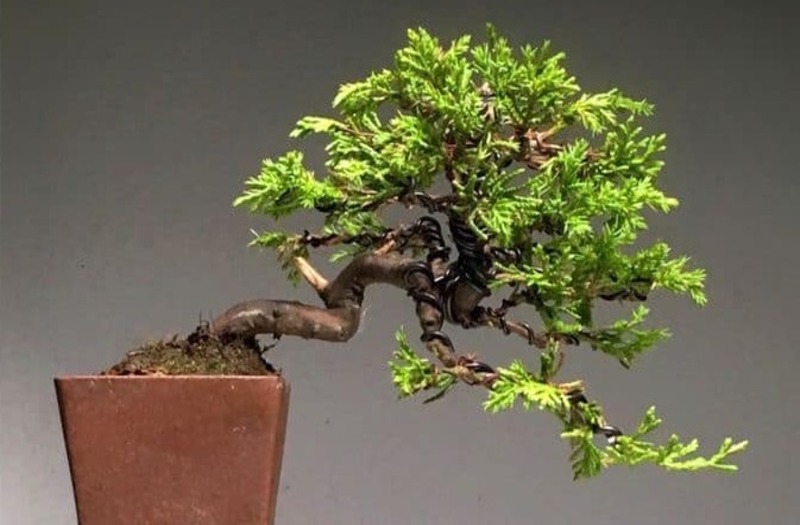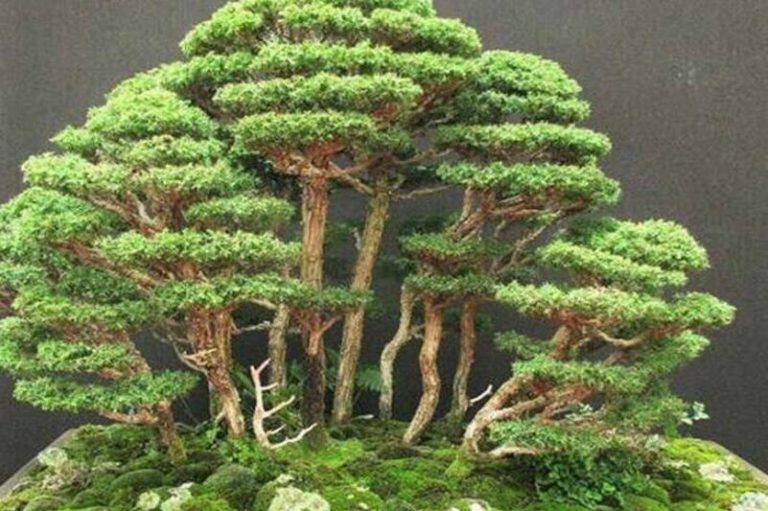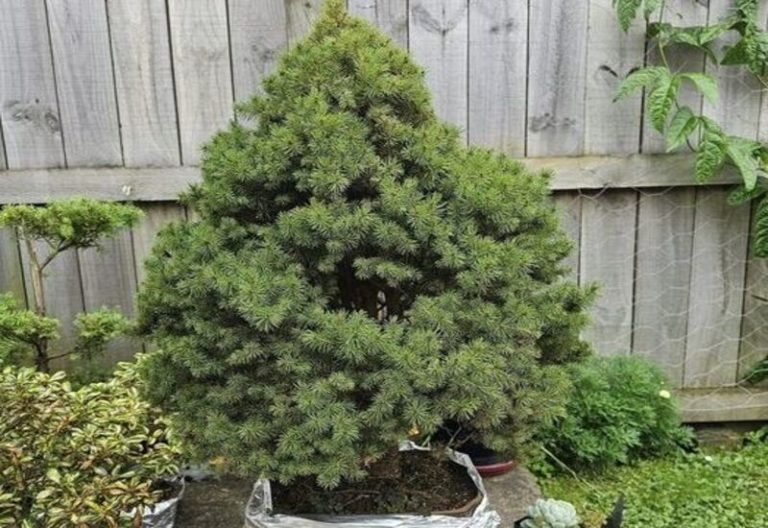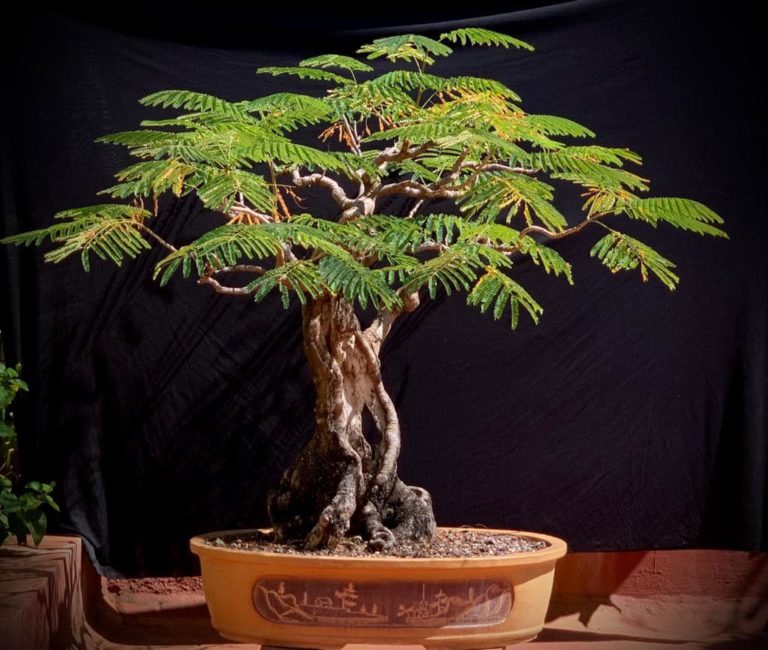Cascade Bonsai: An Ancient Art Form with Modern Appeal
Bonsai trees have been admired for a long time because of how beautiful, symbolic, and calming they are. The cascade bonsai is a style that has won over the hearts of many bonsai fans.
This article will talk about everything about cascade bonsai, from what it looks like and what it means to how to style it and how to take care of it.
Introduction
Bonsai fans like cascade bonsai because it is beautiful and has a lot of meaning. People often think that this type of bonsai is harder than others, but anyone with the right knowledge and skills can learn how to build and care for a cascade bonsai.
What is a Cascade Bonsai?
Cascade bonsai involves the downward growth of a tree, imitating the natural form of a tree growing on a slope or cliff. In contrast to other bonsai forms that grow vertically, the cascade style appears more dramatic and dynamic. This design is also highly significant. It demonstrates how difficult it is for a tree to develop in adverse conditions, much as it is for individuals to overcome obstacles.
How to Style Cascade Bonsai
Styling a cascade bonsai can be a rewarding and creative endeavor. Here are the steps you need to follow to create your own cascade bonsai:
1.Choosing the Right Tree Species
Selecting the proper tree species is the first step in making a cascade bonsai. The greatest trees have long, flexible, trainable limbs that can hang down. Some popular species for cascade bonsai are Japanese maple, pine, and juniper. Select a robust and healthy specimen that is adapted to the local climate and surroundings.
2. Pot Selection
Choosing the right pot for your cascade bonsai is crucial. The pot should be deep enough to accommodate the cascading branches and have good drainage. Select a pot that complements the style and color of your tree.
3. Wiring Techniques
To get the cascading look, you must wire the tree’s branches. Begin by locating the primary stem and picking a branch to act as the cascade’s peak. Create the cascade effect by affixing this branch to the side of the container with a small bend. Similarly, wire the remaining branches so that they are inclined downward and away from the main stem.
4. Pruning
Pruning is a crucial aspect of cascade bonsai style. Frequent trimming helps to keep the tree’s form and size while also encouraging new development. Remove any dead or diseased wood and prune any branches that are growing too long or in the incorrect direction.
5. Styling Options
There are a variety of styles you can choose for your cascade bonsai, from the formal upright style to the semi-cascade style. The formal upright style has a straight, upright trunk with cascading branches extending from the apex. The semi-cascade style has a more horizontal trunk, with the cascading branches extending at an angle from the main trunk.
Styling a cascade bonsai requires careful planning, patience, and attention to detail. By following these steps and selecting the right tree species, pot, and styling options, you can create a stunning and unique cascade bonsai that will be the envy of your bonsai community.

Caring for your cascade bonsai
It is essential to take proper care of your cascade bonsai once you have fashioned it so that it remains healthy and lovely. Here are some care instructions for your cascade bonsai:
- Watering: For your cascade bonsai to stay healthy, you must water it the right way. The soil should always be damp, but it shouldn’t be soaked. Water your bonsai when the top inch of soil feels dry to the touch. How much water your tree needs will depend on things like the size of the container and the type of tree.
- Fertilizing: Keeping your cascade bonsai well-watered is crucial to its survival. Soil moisture should be kept at a consistent, but not drenching, level at all times. You should water your bonsai when the top inch of soil seems dry. Factors such as the tree’s species and container size will determine how often you need water it.
- Pruning: Pruning on a regular basis is essential for keeping your cascade bonsai in form and size. Remove any dead or diseased wood and prune any branches that are too long or growing in the incorrect direction. Encourage branching and density by pinching back emerging growth.
- Repotting: Your cascade bonsai will eventually grow too big for its pot and will need to be repotted. Repot your bonsai every two to three years, or as needed. Choose a slightly larger pot than the previous one, and use fresh bonsai soil.
- Protecting against Pests and Diseases: Keep an eye out for pests and diseases that can harm your cascade bonsai. Common pests include spider mites, scale insects, and aphids. Treat any infestations promptly with an appropriate pesticide. Avoid overwatering, which can lead to root rot and other fungal diseases.
Cascade Bonsai Care Sheet
| Aspect | Care Tips |
| Light | Bright, direct sunlight for at least 6 hours per day, with protection from intense afternoon sun in hot climates. |
| Water | Water deeply but infrequently, allowing soil to dry out completely between watering. In winter, water sparingly or not at all. |
| Soil | Use a well-draining cactus mix or make your own by mixing sand, perlite, and potting soil. |
| Temperature | Tolerates a broad temperature range, but grows best in warm to hot weather and winter’s lower temps. |
| Fertilizer | During the growing season, use a balanced cactus fertilizer every two to four weeks. Water down the fertilizer until it’s half as strong. Try not to fertilize in the winter. |
By following these care tips, you can keep your cascade bonsai healthy and vibrant for years to come. Remember to regularly assess the health of your tree, and address any issues promptly to prevent further damage.
Common Species Used for Cascade Bonsai
There are several tree species that are commonly used for cascade bonsai. Here are a few examples:
Juniper: Junipers are a popular choice for cascade bonsai because of their naturally cascading growth habit. They are also hardy and can tolerate a range of growing conditions. Common varieties used for cascade bonsai include the Green Mound Juniper, Shimpaku Juniper, and Procumbens Juniper.
Pine: Pines are another popular choice for cascade bonsai. They are known for their rugged, textured bark and distinctive needle foliage. Common pine varieties used for cascade bonsai include the Japanese Black Pine, Scots Pine, and Mugo Pine.
Maple: Maples are trees that lose their leaves in the fall, which makes them a good choice for cascade bonsai. They also have a graceful, cascading growth habit that lends itself well to this style. Maples like the Japanese Maple, Trident Maple, and Field Maple are often used for cascade bonsai.
Cherry: Cherry trees are known for their showy, pink blossoms in the spring, which can make for a stunning display on a cascade bonsai. They have a delicate, weeping growth habit that is well-suited to this style. Common cherry varieties used for cascade bonsai include the Yoshino Cherry, Weeping Cherry, and Kwanzan Cherry.
Consider factors like the temperature and growth conditions in your location as well as the general appearance you wish to attain when selecting a species for your cascade bonsai. Certain bonsai species can be better suited for those with more expertise, while others might be more suited for those who are just getting started. You may build a lovely and distinctive cascade bonsai to enjoy for years to come with a little study and tender loving care.
Conclusion
Cascade bonsai is a unique and rewarding style that can bring beauty and symbolism to any bonsai collection. You can make and take care of your own cascade bonsai by following the steps in this article. Remember to choose the right species, pot, and wire, and to provide your tree with proper watering
FAQ:
Q: What is cascade bonsai?
A: Cascade bonsai is a bonsai style that includes training the tree’s trunk to cascade over the side of the container.
Q: What makes cascade bonsai different from other bonsai styles?
A: Cascade bonsai is different because the trunk of the tree needs to grow down instead of up or to the side.
Q: What species of trees are commonly used for cascade bonsai?
Common species used for cascade bonsai include juniper, pine, maple, and cherry.
Q: How do I care for my cascade bonsai?
A: Caring for a cascade bonsai involves regular watering, fertilizing, pruning, and wiring to maintain the desired shape.
Q: Can I create a cascade bonsai from any tree species?
A: Any tree species can be used to make a cascade bonsai, however some are more appropriate than others.
Q: Is cascade bonsai difficult to create and maintain?
A: Cascade bonsai is a more sophisticated kind of bonsai that takes careful attention to detail, but it can be a gratifying and attractive addition to your landscape with the correct expertise and care.
Q: Can I create my own cascade bonsai or do I need to purchase one?
A: You can create your own cascade bonsai by selecting a suitable tree species and using techniques such as wiring and pruning to create the desired shape.
Q: How long does it take to create a mature cascade bonsai?
A: It might take several years or even decades to build a mature cascade bonsai, depending on the tree type and the desired scale.
Q: How do I troubleshoot common issues with my cascade bonsai?
A: Common issues with cascade bonsai include yellowing leaves, root rot, and improper wiring. To troubleshoot these issues, it is important to carefully monitor and adjust watering, fertilizing, and wiring techniques as needed.
Q: Where can I learn more about cascade bonsai?
A: You may learn more about cascade bonsai methods and best practices through a variety of online and offline sources, including local bonsai clubs and organizations.
Also Read:
Blue Jacaranda Bonsai: A Guide to Caring for and Displaying this Beautiful Tree







